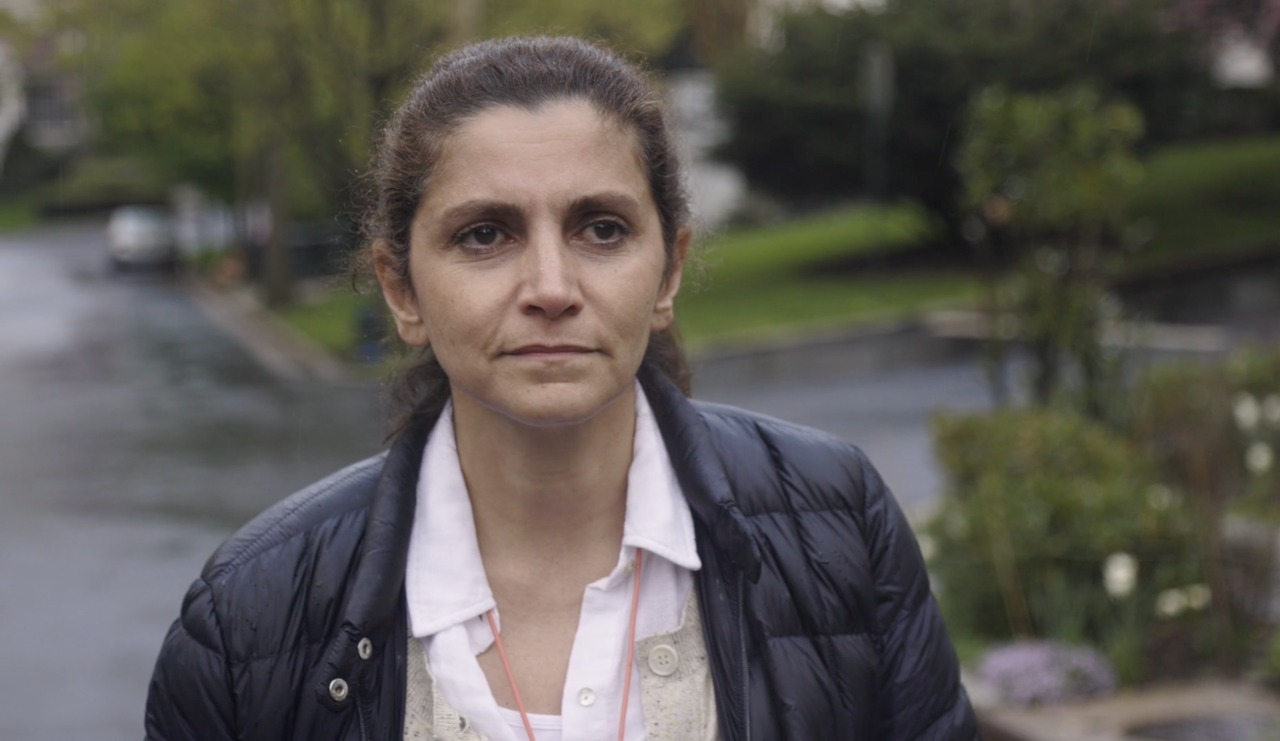Warm-up: Students will explore the issue of family separation by making personal connections and predictions about how international conflict separates families.
Key Vocabulary: Students will learn key vocabulary words to access the short film Bring Them Home.
Introducing the Resource: Students will watch the short documentary Bring Them Home and complete a timestamped viewing guide.
Discussion Questions: Students will discuss themes and issues explored in the film.
Extension Activities: Students will create poetry, write letters advocating for change, and/or read other underreported news stories about Iran.
Objectives:
Students will be able to...
- Explain the cause-and-effect relationship between political events in both the United States and Iran, and how those decisions influence the detainment and release of American citizens in Iran.
- Identify the goals of both the American government and the Iranian government in context of negotiations about a nuclear deal.
- Describe the impact that separation and lack of communication has had on the families of Americans detained abroad.
Warm-up:
Answer the following questions through individual written reflection or small-group conversation:
- Who is one of your favorite people and why? You may choose to describe their special qualities, memories you have with them, or the impact they’ve had on you throughout your life.
- Is there someone you miss, someone you haven’t seen in a while? Who is this person? What are some of the reasons you haven’t been able to see this person?
- Today we’ll be exploring a short film about a man who has been separated from his family for political reasons. Many families experience separation. Brainstorm a list of reasons why families might be separated from each other:
- In your own community
- In your country
- Across the globe
- How can policies separate families? Provide an example.
- How might conflict between countries separate families? Provide an example.
Key Vocabulary:
- Nuclear Deal
- Espionage
- Detained
- Negotiation
- State Department
- U.N. General Assembly
Introducing the Resource:
Foreign governments now surpass terrorist and organized crime groups as the predominant hostage takers around the globe. As of October 2021, at least 26 known Americans are being wrongfully detained around the world, 90 percent of them by foreign governments, according to data provided by the James W. Foley Legacy Foundation.
In this lesson plan, students will watch a short film, Bring Them Home, directed by Kate Woodsome and Ray Whitehouse for The Washington Post. The film examines the story of Iranian American businessman Emad Shargi, who was arrested and imprisoned in Iran on espionage charges. Throughout the film, his wife and daughters work for his release before a new president takes office in Tehran, but their efforts are complicated when Shargi’s release becomes part of negotiations between the U.S. and Iran about limiting Iran’s access to nuclear power.
Students can preview the trailer here.
Educator note: If you’d like to spend time exploring Iran’s conflict with the United States before watching the short film, review “The key moments in the long history of U.S.-Iran tensions,” an article published by The Washington Post.
- Watch Bring Them Home here (approximately 23 minutes).
- While watching Bring Them Home, respond to the questions in this viewing guide.
Educator note: It is free to access the film on The Washington Post website. All viewers are required to register their email. Click here for discounted access to stories published by The Washington Post, reserved exclusively for students and teachers.
Discussion Questions:
Utilize details from the film to support your responses to the following questions:
- The Obama administration negotiated the release of American hostages in Iran in 2015. What key events took place between then and now and how have they changed the nature of negotiations between the U.S. and Iran about the release of U.S. citizens detained in Iran?
- What role does silence play throughout this film? Where is silence employed in negotiations between the U.S. and Iran, and in the actions by either government? How has silence affected the Shargis?
- Emad’s wife, Bahareh, and their daughters have used writing in response to his detention. Bahareh wrote a poem and her daughters have been writing letters to government officials. Consider the following questions:
- What is the purpose of each form of writing?
- What is the impact of both pieces of writing for the family?
- Why do you think filmmakers Woodsome and Whitehouse reference Bahareh’s poetry throughout the film? Why do you think the film closes on her poetry?
Extension Activities:
Option 1. Write a poem to process a challenge.
Bahareh wrote a poem on a napkin during a meeting with the U.S. State Department because she needed to express her emotions about her husband’s imprisonment. Poetry can often help us process our experiences, especially when we are experiencing strong emotions like fear, anger, or despair. Think about a challenge you have faced or are currently facing. Write a poem about that experience that uses literary devices like similes, metaphors, repetition, or rhythm to convey the emotions you are experiencing.
Option 2. Advocate for change with the Local Letters for Global Change student writing contest. Emad Shargi’s daughters have been writing letters to the U.S. State Department and the Biden administration, calling for their father’s release. Writing letters about issues we care about can be a powerful way to inspire our government to take action. The Pulitzer Center encourages students to make their voices heard by writing a letter to their local elected officials explaining a global issue and proposing a solution. Enter our writing contest, which is open for submissions September-November annually, here.
Option 3. Continue reading underreported stories about Iran.
Choose from the list of articles below to continue learning about Iran, the everyday experiences of Iranians, and Iran’s relationship with the United States:
- “Iran’s Hostage Factory” by Jason Rezaian, Kate Woodsome and Sergio Peçanha
- “The key moments in the long history of U.S.-Iran tensions” by Ishaan Tharoor
- “United States and Iran: Back from the Brink of War” by Reese Erlich
- “Walking on a Blade” by multiple authors
Common Core Standards
Determine the meaning of words and phrases as they are used in a text, including vocabulary describing political, social, or economic aspects of history/social science.
Analyze in detail a series of events described in a text; determine whether earlier events caused later ones or simply preceded them.
Compare and contrast treatments of the same topic in several primary and secondary sources.
Accessing the Film Online
It is free to access the film on The Washington Post website, but all viewers are required to register their email. Click here for discounted access to stories published by The Washington Post, reserved exclusively for students and teachers.






